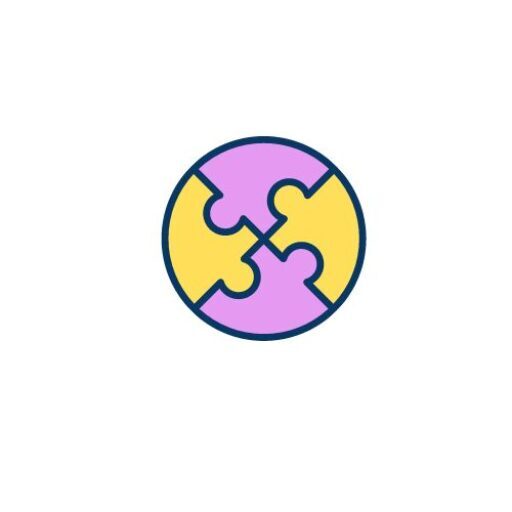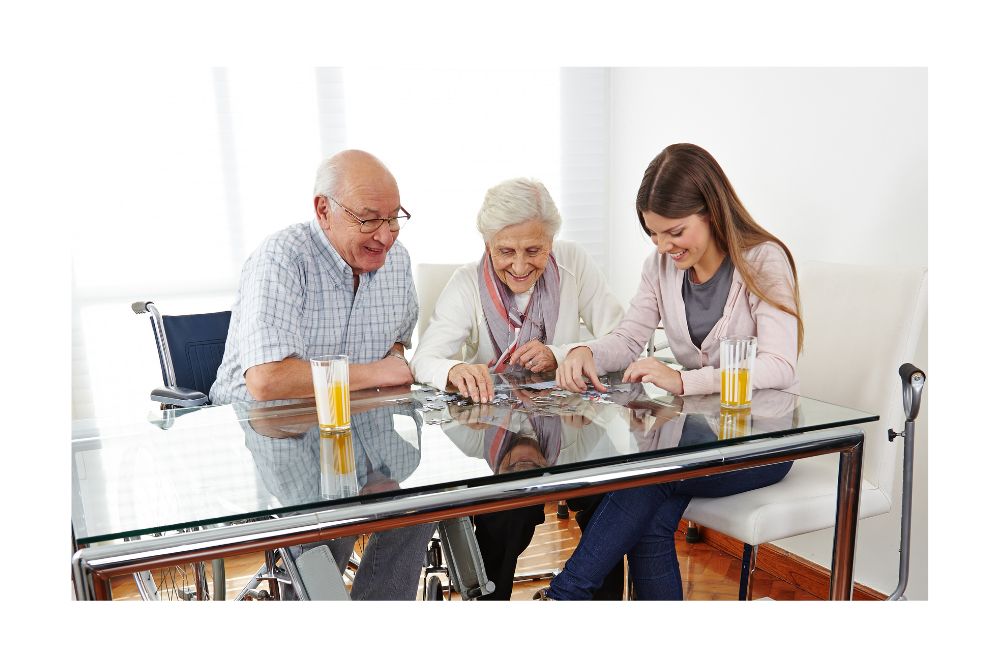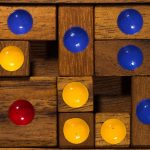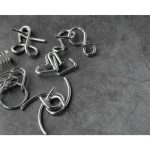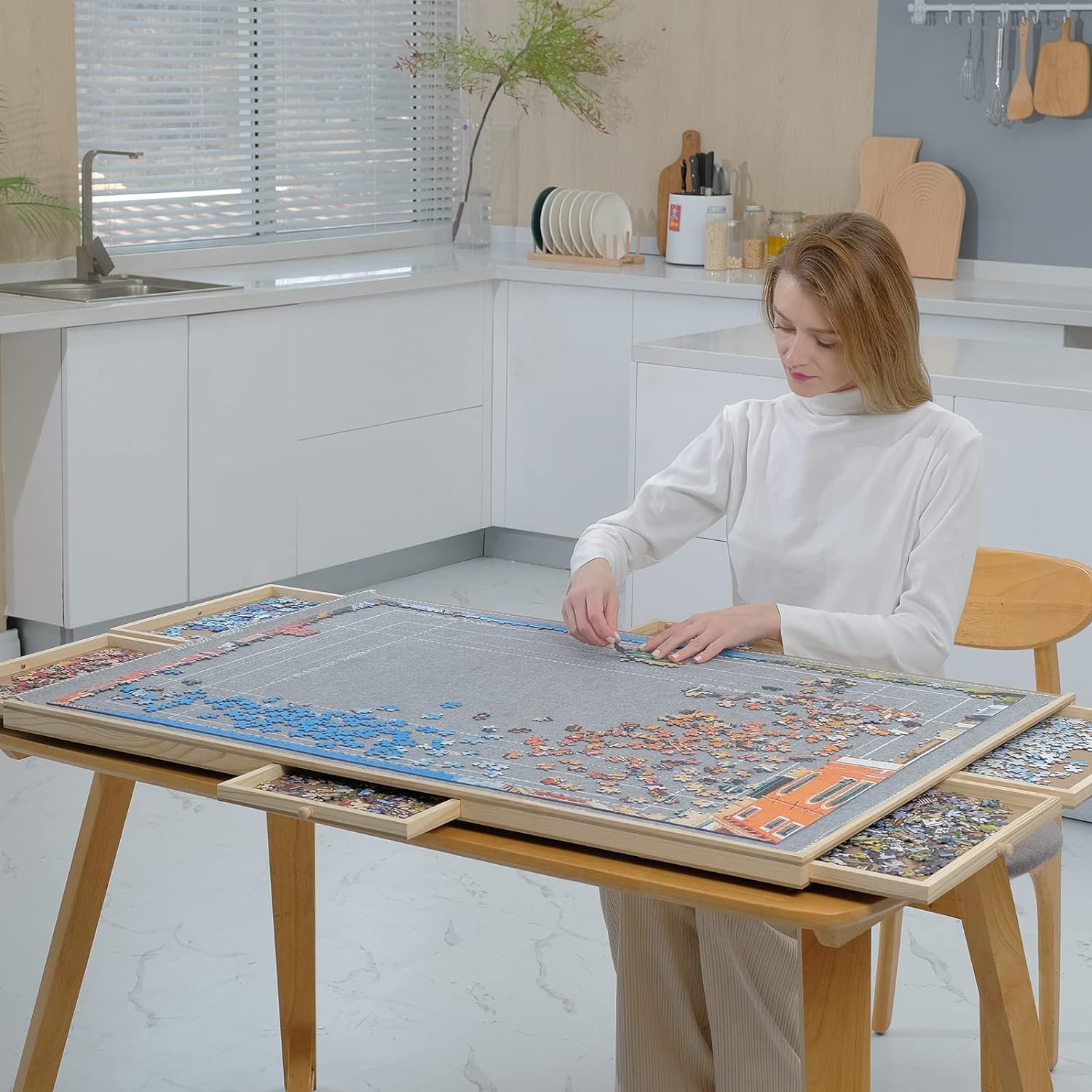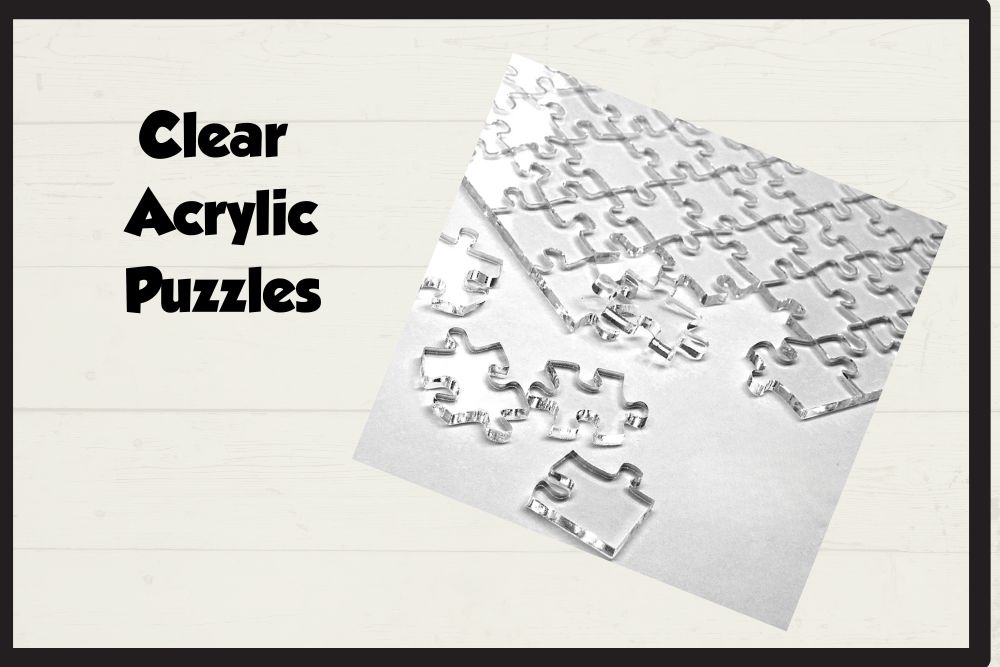Jigsaw puzzles are a popular pastime enjoyed by people of all ages, providing the perfect balance of challenge and relaxation.
Solving a jigsaw puzzle can be an incredibly rewarding experience, resulting in a beautiful, complete picture that was once scattered into many small pieces.
However, some individuals may find piecing together a puzzle to be a daunting task, especially when faced with puzzles that contain hundreds or even thousands of pieces.
In this article, readers will learn valuable tips and strategies to help make the process of solving a jigsaw puzzle easier and more enjoyable.
These techniques can be applied to puzzles of varying sizes and complexities, allowing avid puzzle enthusiasts or those new to the hobby to become more efficient and effective in connecting the pieces.
By implementing these methods, puzzlers will find themselves well-equipped to tackle even the most challenging jigsaw puzzles with ease and confidence.
From organizing and sorting the puzzle pieces to identifying key patterns and connections, understanding the fundamentals of how to efficiently solve a jigsaw puzzle can greatly enhance the overall experience.
Whether working on a puzzle solo or collaborating with friends and family, these tips and techniques can bring new levels of enjoyment and satisfaction to this timeless and engaging activity.
Preparing Your Workspace
Before starting to solve a jigsaw puzzle, it is essential to prepare a comfortable and well-organized workspace. A well-prepared workspace can significantly impact the ease and enjoyment of solving puzzles.
This section discusses selecting a surface, ensuring proper lighting, and the benefits of utilizing puzzle mats.
Selecting a Surface
The first step in preparing your workspace is choosing the right surface to work on. Ideally, the chosen surface should be:
- Flat and smooth to allow the puzzle pieces to interconnect seamlessly
- Large enough to accommodate the puzzle’s full dimensions and provide space for organizing and sorting pieces
- Stable and sturdy to prevent any unwanted movement
Some common surfaces used for puzzles are tables, countertops, or even a large, clean floor area.
Proper Lighting
Next, it is crucial to have proper lighting in your workspace. Adequate illumination helps puzzlers clearly see the subtle differences in colors, patterns, and piece shapes. Some tips for ensuring proper lighting are:
- Position the workspace near a window to take advantage of natural light
- Place a desk lamp or floor lamp near the workspace for additional illumination
- Use daylight bulbs, as they provide a more natural and accurate color representation
Utilizing Puzzle Mats
Another useful tool to consider for your workspace is a puzzle mat. Puzzle mats offer several benefits:
- Portability: Puzzle mats allow you to move your puzzle easily from one location to another without disrupting your progress.
- Protection: A mat can protect the puzzle and the working surface from potential damage.
- Organization: Some puzzle mats come with sorting trays or compartments to help you organize the pieces more effectively.
By selecting an appropriate surface, ensuring proper lighting, and considering the advantages of a puzzle mat, you can create an efficient and enjoyable workspace, setting the stage for a smooth and successful jigsaw puzzle-solving experience.
Organizing the Puzzle Pieces
Organizing the puzzle pieces is essential for solving a jigsaw puzzle easily. This section will discuss various techniques to efficiently sort and categorize the puzzle pieces for a smoother puzzling experience.
Sorting by Color and Pattern
Begin by identifying and sorting the puzzle pieces by color and pattern. This method helps to narrow down potential placements by matching similar colored or patterned pieces together. For example:
- Group all blue sky pieces together.
- Group all green grass pieces together.
- Group pieces with unique patterns or textures, such as a building or a tree, separately.
By doing this, you can focus on smaller sections of the puzzle at a time and make noticeable progress.
Sorting by Shape
Another useful technique is sorting the puzzle pieces by shape. Jigsaw puzzles usually have various shapes of interlocking pieces, such as:
| Shape | Description |
|---|---|
| Edge pieces | Pieces with at least one straight edge, which make up the puzzle border |
| Inner pieces | Pieces with no straight edges and forming the body of the puzzle |
By separating edge pieces and inner pieces, you can quickly construct the puzzle border, providing a clear framework for placing the remaining pieces.
Using Sorting Trays
Sorting trays can be beneficial in organizing the puzzle pieces for easy access. They not only help in keeping the sorted pieces separate, but also allow for easy storage and transportation. Some puzzle enthusiasts prefer to use:
- Plastic trays or containers with multiple compartments.
- Cardboard or paper plates for a more eco-friendly option.
- Custom-made jigsaw puzzle sorting trays, specifically designed for this purpose.
By utilizing these sorting methods and trays, you can efficiently organize your puzzle pieces, making the process more enjoyable and less overwhelming.
Building the Puzzle Border
Building the puzzle border is a crucial first step in solving a jigsaw puzzle. It provides a solid foundation and an overview of the puzzle’s size and shape. In this section, we will discuss the process of identifying edge pieces, assembling the border, and connecting corner pieces.
Identifying Edge Pieces
Begin by sorting through the jigsaw pieces to find those with a straight edge. These are the edge pieces that will form the puzzle’s border. To make the process easier, you may want to organize the pieces by color or pattern, as this will aid in matching them up later.
Keep in mind that corner pieces will have two straight edges, so be sure to set those aside as well.
Assembling the Border
Once you have identified all the edge pieces, start connecting them together by matching colors, patterns, and shapes. Examine each piece’s connectors and indentations to determine which ones correspond to other edge pieces appropriately. Work your way around the entire border, ensuring that the pieces fit together snugly.
It may be helpful to use a separate surface, such as a large piece of cardboard or a puzzle mat, to assemble the border before transferring it to your main workspace. This allows for easier adjustments if any edge pieces have been connected incorrectly.
Connecting Corner Pieces
With the border completed, focus on the four corner pieces. These pieces play a crucial role in the assembly process, as they provide clear starting points for working on the puzzle’s inner sections. Each corner piece will have two straight edges that form a 90-degree angle, making them easily distinguishable from the other edge pieces.
Double-check that the corner pieces are connected correctly to the corresponding border pieces, ensuring a solid foundation for the remainder of the puzzle-solving process.
Separating Sections and Features
In order to solve a jigsaw puzzle easily, one can focus on separating sections and features of the puzzle. This will help break down the overall image into smaller, more manageable pieces. In this section, we will explore some helpful tips on recognizing visual patterns, focusing on faces, and identifying distinct areas within the puzzle.
Recognizing Visual Patterns
Visual patterns can play a crucial role in solving puzzles as they enable us to find connections between different pieces. Look at the printed photo as a reference for identifying specific colors, shapes, and textures that will help you group puzzle pieces together. Enhancing your visual acuity is essential in recognizing these patterns and solving the puzzle more efficiently.
Focusing on Faces
Many jigsaw puzzles include faces, which can serve as helpful starting points. Our brains are naturally wired to recognize faces, making this a simple way to begin. Focus on facial features like eyes, nose, and mouth to find corresponding puzzle pieces. For instance, a pair of eyes on a puzzle piece can be quickly matched to the correct position in the reference photo. This process helps create a sense of organization while reducing the complexity of the task at hand.
Distinct Areas
Another useful strategy is to identify and tackle distinct areas within the puzzle. These can be unique features, backgrounds, or even specific color patterns. By separating and working on these distinct areas one by one, you can quickly progress through the puzzle without feeling overwhelmed by the entire picture.
Utilizing these tips to separate sections and features will undoubtedly aid in the process of completing a jigsaw puzzle with ease. Remember to always reference the printed photo and practice your visual acuity skills to efficiently connect puzzle pieces.
General Tips for Solving Jigsaw Puzzles
When tackling a jigsaw puzzle, there are several general tips and strategies that can make the process more manageable and enjoyable. These tips can help you develop essential skills like hand-eye coordination, shape recognition, planning, and patience.
Hand-Eye Coordination and Shape Recognition
Developing hand-eye coordination and shape recognition skills are crucial for solving a jigsaw puzzle effectively. To practice these skills, try the following techniques:
- Focus on edge pieces first: Start by identifying and sorting the edge pieces. This will help you establish the puzzle’s border and give you a better sense of the overall picture.
- Look for patterns: Pay attention to unique colors, textures, or patterns in the puzzle image. Use these visual cues to match pieces with their corresponding sections.
- Experiment with different pieces: If you’re not sure where a piece fits, try rotating it and comparing it to nearby pieces. This approach can help you quickly eliminate incorrect placements and find the correct one.
Planning and Patience
Planning and patience are essential when trying to solve a jigsaw puzzle. Consider these suggestions:
- Organize your workspace: Create a clutter-free environment by setting aside a dedicated space for puzzle assembly. This makes it easier to focus and stay patient throughout the process.
- Sort puzzle pieces: Group puzzle pieces by color or pattern to make it easier to find the ones you need when you need them. This can significantly reduce the time spent searching and aid in a smooth assembly process.
- Take breaks: Puzzles can be daunting, so remember to take breaks when needed. Stepping away for a short while can provide a fresh perspective and renewed motivation.
Having a Reference Image to Consult
One valuable asset when solving a jigsaw puzzle is a reference image. Keep the following tips in mind:
- Study the box image: Before starting the puzzle, examine the image on the box carefully. Note important details and intricacies that can help guide your assembly.
- Keep the image visible: Make sure the box is within eyesight during the entire puzzle-building process. Refer to it often to maintain a clear sense of the image you’re trying to create.
- Compare progress to the reference: Regularly check your progress against the reference image to make sure you’re moving in the right direction.
By following these tips and practicing the key skills of hand-eye coordination, shape recognition, planning, and patience, you’ll be better equipped to tackle any jigsaw puzzle with confidence.
Working with Different Puzzle Sizes
When it comes to solving jigsaw puzzles, the size of the puzzle plays an important role in the level of challenge and the suitable techniques. In this section, we will discuss how to approach different puzzle sizes, specifically comparing 500-piece and 1,000-piece puzzles, and how to adapt techniques based on difficulty.
Comparing 500-Piece and 1,000-Piece Puzzles
A 500-piece jigsaw is typically considered more suitable for beginners, while a 1,000-piece puzzle poses a challenge to experienced puzzle enthusiasts. While tackling either of these sizes, keeping the number of pieces in mind can help you set realistic goals and expectations.
Here are some differences between the two puzzle sizes:
- Completion time: A 500-piece puzzle generally takes less time to complete compared to a 1,000-piece puzzle due to the reduced number of pieces.
- Difficulty level: As the number of pieces increases, so does the level of challenge. Therefore, a 1,000-piece puzzle can be more difficult to solve than a 500-piece jigsaw.
- Space requirement: Larger puzzles require more space to spread out and assemble, so ensure you have sufficient room to comfortably arrange a 1,000-piece puzzle.
Adapting Techniques Based on Difficulty
As the size and difficulty of a jigsaw puzzle vary, it’s essential to adapt your techniques accordingly. Here are some tips for tackling puzzles of different sizes and skill levels:
For beginners: Start by focusing on the edge pieces and constructing the puzzle’s border. This will provide a defined workspace for the rest of the puzzle. Moreover, sorting the pieces by color and pattern can assist in identifying connections more easily.
For experienced puzzlers: While working with a 1,000-piece puzzle, divide the pieces into smaller subsets based on distinct features, such as a specific color or pattern. This way, you can focus on smaller sections instead of feeling overwhelmed by the sheer number of pieces. Also, consider working on sections that have a clear outline, as doing so can make the overall assembly easier.
Regardless of the puzzle’s level of difficulty, patience and persistence are key. Remember to take breaks and come back to the puzzle with a fresh perspective when necessary, and most importantly, enjoy the process!
Completing and Preserving Your Puzzle
After investing time and effort into your jigsaw puzzle, you want to ensure it remains in good condition for future enjoyment or display. In this section, we’ll discuss how to deal with stuck positions, glue the puzzle, and display your finished masterpiece.
Dealing with Stuck Positions
Occasionally, puzzlers may find themselves in a seemingly impossible situation, unsure of how to proceed. These stuck positions can be frustrating, but don’t worry; here are some tips to get you back on track:
- Step back: Take a short break to clear your mind and refocus.
- Examine the big picture: Look at the completed sections and use them as a reference to help you connect the remaining pieces.
- Shuffle the pieces: Spread out your unattached pieces and regroup them according to color, pattern, or edge type. Carefully examine each one for a potential match.
- Seek help: Ask a friend or family member to take a fresh look at the puzzle, as a new perspective can often spot the missing link.
Gluing the Puzzle
Once you’ve completed your jigsaw puzzle, you may want to preserve it by gluing the pieces together. Follow these simple steps to create a lasting memory of your accomplishment:
- Prepare the surface: Place a sheet of wax paper or plastic wrap beneath the completed puzzle to protect your workspace.
- Apply the glue: Use a specialized jigsaw puzzle glue or a watered-down white glue. Apply it evenly with a brush over the surface of the puzzle, making sure to cover the whole area.
- Dry completely: Allow the glue to dry for at least 24 hours. You may want to place a sheet of wax paper on top of the puzzle and slightly weigh it down to ensure the pieces stick together.
Displaying Your Finished Puzzle
Showcasing your finished puzzle is a great way to celebrate your achievement and share it with others. Consider these methods to display your masterpiece:
1. Frame: Purchase a frame designed for jigsaw puzzles, or carefully mount your glued puzzle on a foam board and place it in a standard frame.
2. Mount on a board: Attach your puzzle, whether glued or not, to sturdy foam or backing board for support. You can then hang or display the mounted puzzle using wall hooks or an easel.
3. Create a custom display: Have your completed puzzle professionally mounted and framed to match your unique style and preferences.
Alternative Puzzle Types
While jigsaw puzzles can be a fun and challenging activity, there are other types of puzzles that you might find equally enjoyable. In this section, we will explore some alternative puzzle types, including slide puzzles, tile and number puzzles, and brain teasers.
Slide Puzzles
Slide puzzles, also known as sliding block puzzles, consist of a frame containing multiple pieces which can be moved along a fixed route. The objective is to rearrange the pieces into a specific pattern or image. One popular type of slide puzzle is the 15-puzzle, which features a 4×4 grid with 15 numbered tiles and one empty space. To solve a slide puzzle:
- Identify the desired pattern or image and plan your moves in advance.
- Move the tiles strategically, focusing on rearranging small sections at a time.
- Use the empty space to help maneuver the tiles into their correct positions.
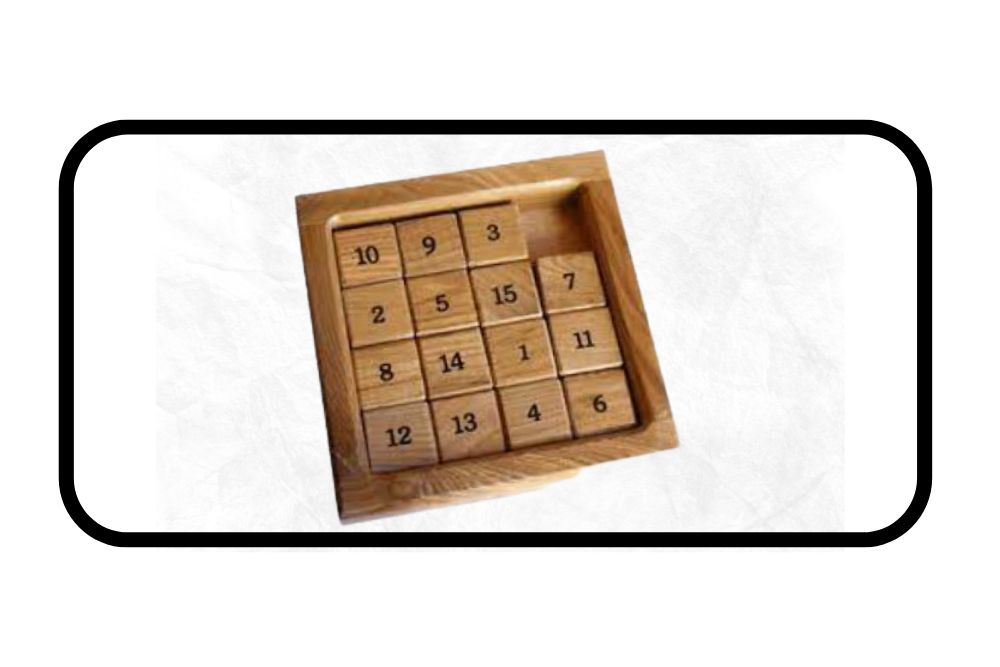
Tile and Number Puzzles
Tile and number puzzles involve arranging numbered or patterned tiles in a specific order. Some well-known examples include Sudoku and KenKen. Solving these puzzles often requires logical thinking and attention to detail.
When attempting a tile or number puzzle, it can be helpful to:
- Take note of any patterns or rules that govern the arrangement of the tiles.
- Work on solving smaller sections of the puzzle before tackling the entire grid.
- Double-check your progress to ensure you haven’t made any mistakes or overlooked any possible moves.
Brain Teasers
Brain teasers are puzzles that test your mental acuity, problem-solving skills, and creativity. They often come in the form of riddles, logic problems, or visual challenges. Some brain teasers might involve rods or other physical components for added complexity.
To tackle a brain teaser:
- Read or examine the problem carefully, taking note of any given information or constraints.
- Think critically and use deductive reasoning, looking for possible patterns or connections to help you arrive at a solution.
- Consider unconventional approaches or “outside-the-box” ideas to help solve the challenge.
Exploring alternative puzzle types like slide puzzles, tile and number puzzles, and brain teasers can be a refreshing change from traditional jigsaw puzzles. Each of these options offers unique challenges and opportunities for mental exercise, making them an enjoyable way to pass the time.
Key Takeaways
When tackling a jigsaw puzzle, it’s essential to have a good strategy in place. Here are the key takeaways for solving a jigsaw puzzle easily:
- Start by assembling the border: Look for edge pieces and connect them, forming the outline of the puzzle.
- Sort pieces by color and pattern: Organize the remaining pieces according to their dominant colors and patterns, which will make it easier to locate pieces that belong together.
- Work on smaller sections: Focus on completing smaller areas before connecting them to form the bigger picture.
- Use the picture on the box: Regularly consult the image on the box to help with the placement of pieces and identifying patterns.
- Incorporate a puzzle mat or flat surface: Working on a clean, flat surface, or using a puzzle mat, will help keep pieces organized and prevent them from getting lost or damaged.
- Take breaks: Give your eyes and mind a rest by taking regular breaks, which can also help with spotting patterns and missing pieces upon your return.
By following these straightforward tips, anyone can enhance their jigsaw puzzle-solving skills and enjoy the process even more.
